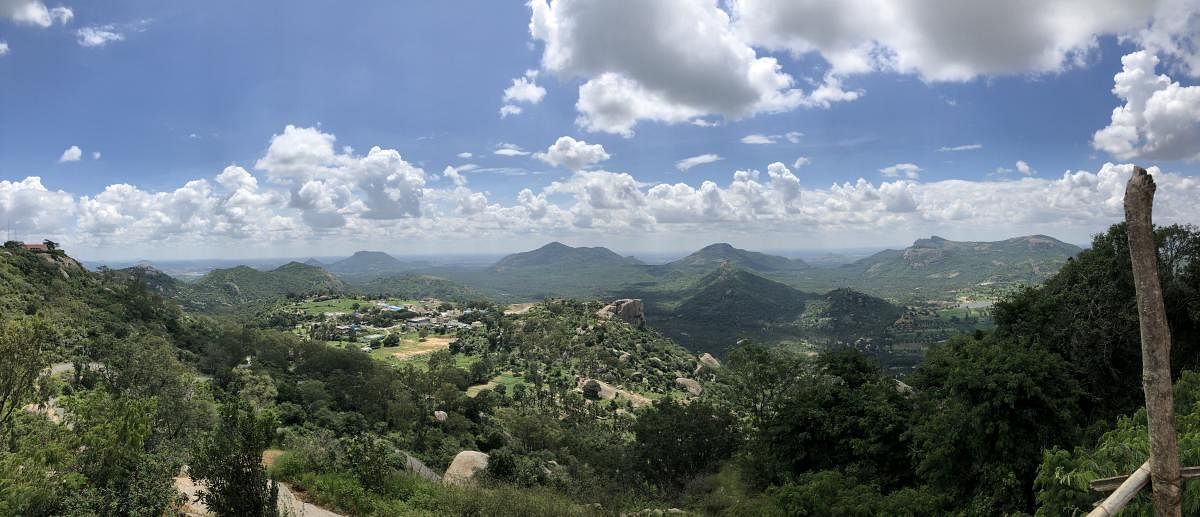
Bengaluru is blessed to have several weekend-getaways in its vicinity, yet every time a weekend approaches, the usual suspects include a sojourn to Nandi Hills. So when a friend from the neighbouring city of Tumakuru asked us to try Devarayanadurga for a change, I scratched my head in confusion. Deva-what was my first reaction. But an impromptu plan soon turned out to be a relaxing diversion.
Narrow, serpentine roads welcome us on an unexpectedly smooth drive as we exit Tumakuru for Devarayanadurga, a small town perched on top of a hillock just two hours from Bengaluru. Tumakuru disappears as quickly as it first appears on the map and the drive becomes a scenic masterpiece straight out of a work of art. Tall trees on either side of the road converge in the middle of the road as if for a warm welcome. As the ascent becomes steep with a delicate gradient, barren boulders pierce through the thick vegetation around us, making for a delightful skyline that is reminiscent of the boulders of Hampi during monsoon. A handful of houses lie scattered around a clearing, with sparse vegetation comprising trees and shrubs that are so dark a shade of green that they seem to be burnt. Verdant mountains encircle this small sign of human existence, reminding me of the glorious Machu Picchu. As I try to photograph this ensemble of serenity with my phone, my lungs soak in the clean air that is a welcome change from the dust, smoke and pollution of Bengaluru. One almost forgets that a pandemic is sweeping across the world with impunity.
The drive to the top culminates at the Lakshmi Narasimha Swamy Temple, for which one has to trek about 200 steps in the company of monkeys who are adept at stealing bananas from devotees. According to apocryphal accounts, Brahma prayed at this spot for 2,000 years in the Dvapara Yuga. Impressed with his prayers, Lord Vishnu appeared here as Narasimha with Goddess Lakshmi, lending the temple its name. Locals believe that the temple protects the wildlife, especially the tigers, in the surrounding forests. A short distance away lies Namada Chilume, a natural spring, which traces its origins to the times of the Ramayana. Legend has it that during his exile with Lakshman, Sita and Rama stayed here. When he could not find any water to apply a tilak to his forehead, Rama shot an arrow at a rock. The resultant spring came to be known as Namada Chilume, which literally translates to ‘small spring for forehead paste’. The city of Devarayanadurga, which means abode of the kings, changed many hands and was even a part of the Vijayanagar Empire before finally being captured by Mysuru’s King Krishnaraja Wodeyar III centuries later. The history buff in me had had a heyday — it is fascinating that a tiny town like Devarayanadurga could have a legacy that goes back more than two millennia.